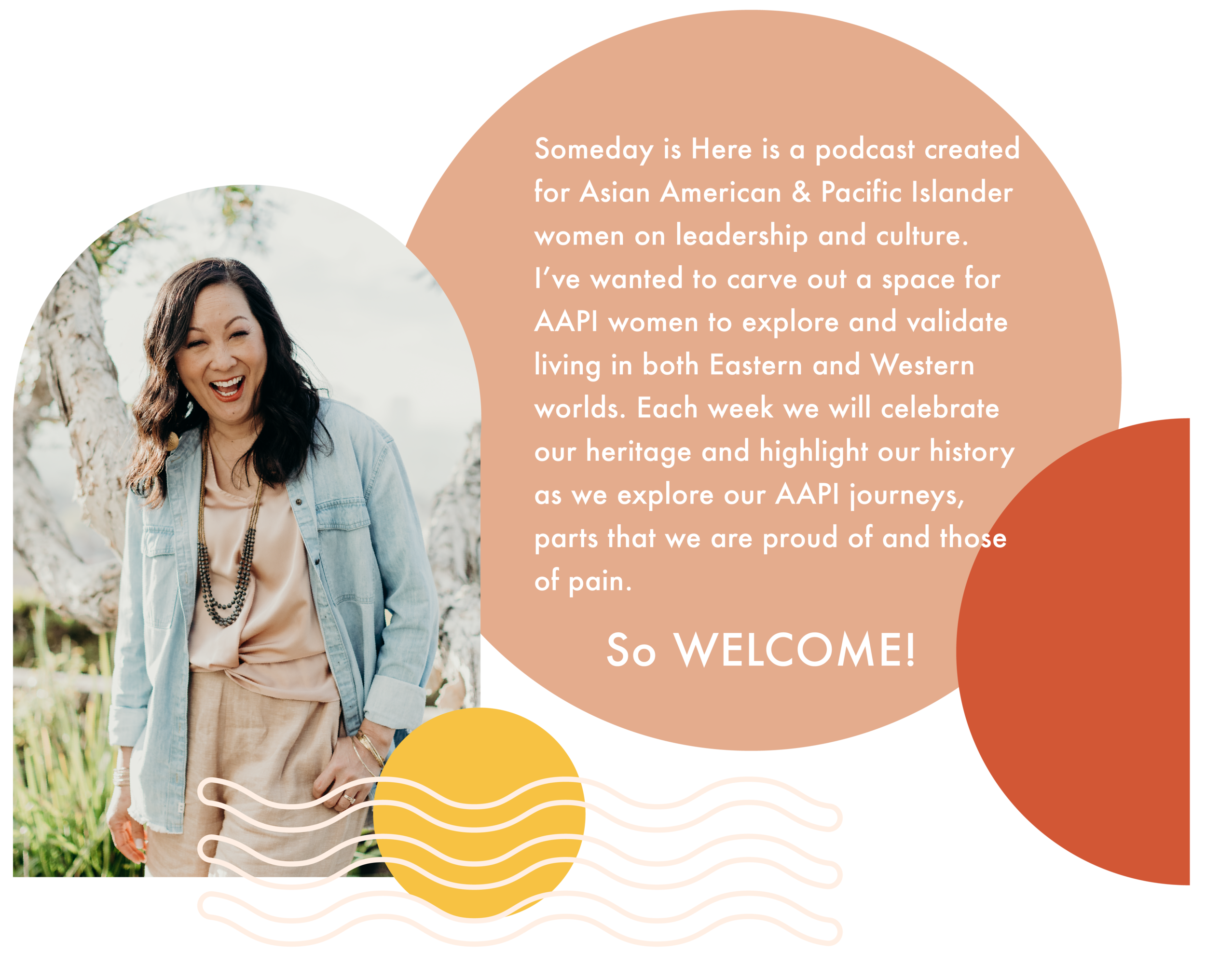Episode 25 - Laura Izumikawa
Episode 25 w/ Laura Izumikawa
Thoroughly enjoyed my conversation with the talented and down-to-earth, Laura Izumikawa (aka Naptime With Joey). Loved learning about her being mixed race and how she honors all of who she is with her Korean, Japanese, and Chinese heritage. We talked about the racism that can take place between different Asian groups and the importance of representation and the kind of future Laura wants to help build for her daughters. I really appreciate Laura’s focus on using her social media platform for good and how her talents and gifts as a photographer and videographer bring joy and meaningful content to her followers. Can’t wait to hear your feedback and what stood out to you from our conversation!
LEARN MORE ABOUT LAURA
Instagram: https://www.instagram.com/lauraiz/
Facebook: https://www.facebook.com/lauraizchoi/
Blog: http://lauraiz.com/
YouTube: https://www.youtube.com/lauraiz
Twitter: @lauraizumikawa
LEADERSHIP LESSON
“What attracts people to you is learning how to support others and doing more than just enough.”
Laura Izumikawa, a professional photographer and videographer, began creating photos and videos of her adorable napping daughter, Joey, dressed up in pop-culture costumes as a cheeky way to make her friends and family laugh. What began as a way for Laura to find the light humor in parenting turned into a viral phenomenon after Laura began posting photos of her deep sleeping, costume-clad baby on Instagram. Laura has amassed a loyal audience who follow her for numerous reasons; her humorous approach to first-time parenting, her informative tips on how to raise a toddler (from packing for travel to fun ways to keep her imagination stimulated), her relatable approach to talking about her home and lifestyle, to teaching her daughter the importance of spreading kindness - all told through the lens of a down-to-earth and candid mother. Naptime With Joey was published in 2017 by Simon and Schuster, and will make you LOL for its witty and topical pop culture costume references. Laura and Joey have been featured on USA Today, ABC News, Huffington Post, and BuzzFeed, and recent partnerships include Canon, Samsung USA, Target, Huggies, Mattel, Alaska Air, and Whole Foods. Laura, Joey, and Laura's husband Allen live in Los Angeles. The family includes husband Allen and second daughter, 1 year old Casey.
FAVORITE ASIAN COMFORT FOOD
PHO!
DID YOU KNOW?
Asian American: Who Started It?
Did you know that the term “Asian American” was originally coined in the 1960s by activist and historian Yuji Ichioka as a political term to unify Asian American communities? The Asian American movement was largely inspired by the Civil Rights Movement and scholars have since then argued the pros and cons of maintaining the term Asian American as a panethnic term, meaning it encompases many Asian American identities. A limit of the term is that its broadness ignores the unique stories and struggles of specific Asian American communities. For example, the Japanese American story and the Indian American story, while there may be similar themes that come up, are very different. It also ignores issues of colorism that are still prevalent within Asian American communities. It also paints a monolithic story of each unique identity. For example, the Japanese kibei story is much different than those who are Nisei. Kibei JAs, while technically also second generation, were born in the United States but sent back to Japan for reasons such as schooling or war. The Nisei are the second generation Japanese Americans most closely associated with the Japanese American incarceration camps. A pro to the term is that it creates a sense of unity within differences and similarities. It creates a sense of common ground and solidarity with one another in times of distress. More recently during the COVID-19 times, the term has been useful in standing in solidarity with one another against hate crimes and readdressing common themes and sources of discrimination and racism.
Resources
Mountain Movers | Asian American Studies Center at UCLA
AAPI History: Activist Origins of the Term 'Asian American' | Time
Yen Le Espiritu Asian American Panethnicity: Bridging Institutions and Identities

















